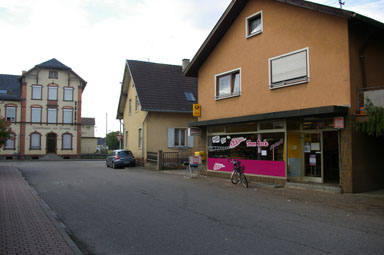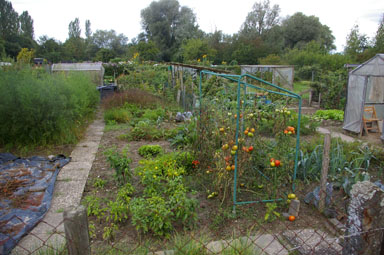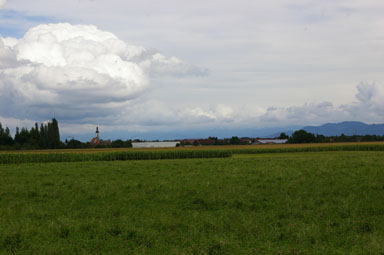August 1, 2011
81 comments and counting
and they aren't all me and Henry Kramer.
The Journal may have lost its bearings in reporting on the Dryden Safe Energy Coalition, but the comments are lively and maybe even balanced, if rarely neutral.
Dryden SEC unloads
I have a hard time imagining that this actually came from a group posing as rationalists opposed to emotional conversation. It reminds me of complaints that NIMBYs will use any argument available to stop a project, only it's coming from a group without much regard for anyone's backyard.
Let's see - the risks of nine figure litigation - hundreds of millions of dollars! (They like big numbers.) The Fifth and Fourteenth amendments to the Constitution. "A 100% confiscatory tax on wealth." Preemption, an issue our Republican State Senator seems interested in changing and that the draft SGEIS wobbles around. Carefully chosen cases that haven't resolved this issue. The dangers of nullification. "Knowingly attempting to override and destroy constitutional, federal, and state rights." Discrimination. Clouded land titles. The Town's responsibility for doing anything that it might have known was illegal, and heck, my favorite, personal liability of board members.
None of that sounds remotely emotional, right? Concluding the list with a warning that this will destroy Town Board members' personal lives is just dull rationality, right? Friendly advice? Then throw in a reference to the Kyoto Protocols for spice.
I understand that the gas companies and their allies are perfectly willing to use intimidation when they think it will work for them. It happens all the time. I'm not sure why Henry Kramer thinks it's a good idea.
August 3, 2011
Town Board passes drilling ban 5-0
I couldn't be there, but I'm pleased to report that the Town Board passed the amendments to Town zoning that establish a gas drilling ban, and unanimously.
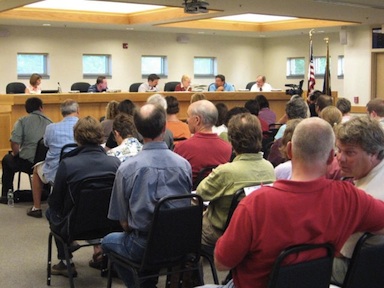
Crowd at August 2nd Town Board meeting. (Photo courtesy Hilary Lambert.)
This modifies the existing zoning to prohibit natural gas drilling and related activities. The proposed new zoning will likely replace that existing zoning soon, and needs some work to incorporate a similar ban, but it sounded like the Town was working on it.
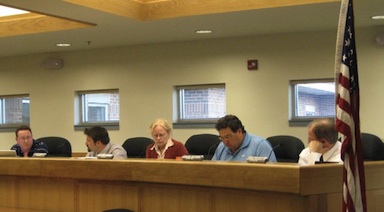
Voting on the ban. (Photo courtesy Hilary Lambert.)
Update: The Ithaca Journal article is here, and there's video here.
August 19, 2011
Returning slowly
I didn't really mean to take a vacation from this site when I took a vacation from work, but the joys of jetlag and challenges of connectivity made it an extended break. (Well, except for the weather page, which updates automatically, or did until the day before our return.)
I'm now back, but back into the joys of jetlag. Updates here will resume shortly...
August 20, 2011
Something over Varna
On my way back from the transfer station, I stopped by the side of the road to take a cell phone picture of the beautiful fog and sun over Varna and Mount Pleasant. No, it wasn't a nuclear blast. Nor do I think (in this case) that it's divine blessings.

Something (sunshine meets fog) over Varna.
I think the sun came out just enough while I was doing that to produce a very different-looking effect.
March for the Animals led by Freeville's Dickinsons
Amy, Ann, and Rachel Dickinson are chairing the second annual "March for the Animals", to be held October 1st at TC3. They're hoping to raise $100,000 for the Tompkins County SPCA. Last year's event raised $53,000.
In sadder news, a Dryden resident died while climbing Algonquin Peak in the Adirondacks.
August 22, 2011
RPM trees at Tompkins County Soil and Water office
Apparently RPM Ecosystems, one of the bigger companies to set up shop in Dryden in the last few years, didn't survive the current round of economic bleakness. I noted a bankruptcy filing last September.
One small silver lining is that RPM trees are now available from the Tompkins County Soil and Water District office at 1771 Hanshaw Road. You may want to call ahead at 257-2340 to find out what they have left.
This and the closing of Saunders Greenhouse put a dent in an earlier idea I'd had about greenhouse area along Routes 13 and 366.
Update: Looking further into the August 2011 Soil and Water Conservation News, I see:
Well over 90 percent of the grant dollars spent on conservation projects in 2010 were reinvested back into the local and regional economy, according to a survey by the Soil and Water. Local contractors are hired to implement the projects and supplies are purchased from area businesses that spend this money locally on labor, materials, and equipment.
"If it were not for agriculture projects funded by the State, our Construction Division that employs ten people would not exist," said Don Ford of RMS Gravel. "Roughly 80% of the work completed by our Construction Division comes from funding for conservation projects, and we spend 95% of these funds right here in the county and the surrounding area."
County legislature redistricting discussion at Varna tomorrow night
It may seem like an obscure issue, but the lines drawn for the County Legislature districts may well have a dramatic effect on how county government works for you. The county appointed an Independent Redistricting Commission to come up with new lines based on 2010 census data, and they're having a public meeting Tuesday, August 23rd, at 5:30pm, at the Varna Community Center, 943 Dryden Road in Varna.
Mike Lane testifies on redistricting
Long-time readers of this site know that one of my least favorite features of New York State is the New York State Legislature, which all too frequently runs for the benefit of New York State legislators. One of the foundations of that has been the tradition of gerrymandering, in which the Assembly majority draws district lines for the Assembly, while the Senate majority draws lines for the Senate. Unsurprisingly, we end up with legislative lines badly tilted toward the parties that drew them.
Way back in 2007, while redistricting was mostly theoretical, Assemblywoman Barbara Lifton hosted a forum on the issue, and I posted a transcript.
County Legislator Michael Lane was the voice of sanity back then, and I'm delighted to see that he's continued to press the issue as LATFOR - the joint legislative committee managing the deals, I mean districting - is holding hearings. In his closing, he even used the accurate word that legislators least like to hear: corrupt.
I would conclude by saying that the current process is undemocratic. Let's do it the right way. If this Task Force, or the Legislature as a whole, recommends districts in the old corrupt fashion, then I hope the Governor will keep his word and veto them. It would not be pretty and court actions might have to come into play. Whatever occurs, it is definitely time that self-serving partisan gerrymandering come to an end. Make it happen.
I've posted his whole statement, which includes notes on Tompkins County's own redistricting as well as the way the county is treated for congressional and state legislative redistricting.
Michael E. Lane
Tompkins County Legislator
District 14, Dryden
320 North Tioga Street
Ithaca, New York 14850
(607) 274-5434
Chair, Government Operations CommitteeTestimony to:
New York State Legislative Task Force on Demographic Research and Reapportionment
Binghamton, New York
August 17, 2011Members of the Task Force.
Thank you for holding a hearing on this important topic here in the Southern Tier, and for affording me the opportunity to comment on your important task.
By way of background, I am Michael Lane, a resident of the Village and Town of Dryden in Tompkins County. I formerly served in Village government. I was Mayor of the Village Dryden for ten years, and am now in my fourteenth year of service as a Tompkins County Legislator. I currently chair the County's Government Operations Committee. In 2001, I chaired its Redistricting Committee after the 2000 Census.
Like Congress and the New York State Legislature, most counties must be redistricted as well. For the redistricting process after the 2010 Census, the Tompkins County Legislature has made a thoughtful and considered decision to establish a local independent redistricting commission to redraw districts to equalize populations. By a bipartisan and nearly unanimous vote, a resolution was adopted by which a nine-member commission was established. No elected or appointed officials, and no officers of any political parties or committees were eligible for appointment. The commission was directed not to take into consideration the residences of any incumbents, and to try to establish districts that respect municipal boundaries and communities of interest. There are copies of the resolution and memorandum establishing the Redistricting Commission annexed to my written testimony.
I believe that Tompkins may be the only New York county that has established an independent redistricting commission. We did it for two reasons: The first was to provide fair divisions to make sure everyone's voice is equally heard. And the second, as emphasized by many County Legislators at the time of its adoption, was to send a message to the New York State Legislature, that an independent process can be constructed for redistricting, and to do so is the right thing to do. Even though we are a junior partner, we chose to set an example.
It matters to our democracy how we redraw all of our representative districts, whether at the congressional, state or county level. The process should not be about the personal power of incumbents, or loading the dice for one party or the other. It should be about establishing fair play.
You all know the abuses. For a frank assessment, I commend to you the book of former New York State Senator Seymour Lachman, entitled Three Men in a Room (The New Press, New York, N.Y., 2006). Mr. Lachman, a Democrat, describes State Senate gerrymandering after the 2000 Census and in particular an incident in which the Republican Majority Leader promised him a safely constructed district, if only he would change parties or do what the Majority Leader told him (P. 38). A copy of that excerpt from the book is attached to my written testimony.
Tompkins County has been the recipient of substantial gerrymandering abuse. Take a look at the map. The County is shared by two Congressmen. Before 2000, it was in only one district, but now it is divided in two. Most of the county, including where I live, is a part of District 24, represented by Richard Hanna. But, a narrow wedge consisting of the Towns of Danby and Ithaca, and the City of Ithaca, pierces from the south and attaches to District 22, represented by Maurice Hinchey. That gerrymandering was done for just one reason-- to keep the City and Town of Ithaca attached to the 22nd District for Congressman Hinchey, because it had given him the margin of victory in at least one election. The rest of the towns in Tompkins County found themselves connected to a district extending east to Utica and Rome, and then well into the north country, areas with which there is almost no community of interest. Because the county boundaries were not respected and the Ithaca population center was stripped away, those towns have very little influence in District 24.
The gerrymandering of Tompkins County for the New York State Senatorial Districts is even more offensive. Tompkins County is nearly unique in upstate. It is the Home of Cornell University and Ithaca College. It has a majority Democratic registration and often votes that way. It ought to be a part of a single district, but has been split into three parts to dilute it voting power. The west part of the county, including the City of Ithaca, is attached to the 53rd District represented by Thomas O'Mara, which is a heavily Republican district. The eastern part of Tompkins County is attached to District 51, represented by James Seward. And then there is the lone Town of Lansing that is chopped off and annexed to District 54, represented by Michael Nozzolio.
Senator Seward's district is a remarkable feat of gerrymandering. As you may have heard, the irregular shape of that district looks like the outline of Abraham Lincoln riding a vacuum cleaner. So much for regular, compact districts. To reach to the west and eventually to Cortland and Tompkins Counties, a row of towns is connected, that are obviously there only to minimally comply with the legal requirement that the district be contiguous.
This dysfunctional system of gerrymandering is fueled by the domination of incumbent state legislators. New legislators appear rarely except when there are vacancies caused by death or retirement. Many incumbents are followed by hand picked replacements. Two of Tompkins County's legislators got their jobs after having been employees on the staff of retiring popular legislators, who, of course, endorsed them.
There are many reforms that are needed to correct the deficiencies in the New York State Legislature, but none is more fundamental than to correct the process of how Senate, Assembly, and Congressional districts are drawn . Since the 1970's, and even more so since the redistricting that took place after the 1980 federal census, there has evolved a fundamental "deal" in the New York. It goes like this: the Legislature must re-district every ten years and the governor must approve the plan. Three counties in New York City have to meet federal muster for representation of minorities under the Federal Voting Rights Act. The Senate is controlled by the Republicans and the Assembly by the Democrats. The Republicans draw district lines to favor their incumbents and to keep voting control of the Senate, and the Democrats do the same with Assembly Districts to keep control there. The Congressional districts, because both houses must agree, are slightly fairer but their irregular shapes make campaigning in them very difficult for challengers. It's called "gerrymandering" and it is done as a science, complete with the latest computer technology.
I support Governor Cuomo's call for an independent, non-partisan, redistricting commission. It's time to act. The details need to be agreed to--and I am not minimizing the difficulty of that discussion. There is time to do this if the Legislature wants it. The process needs to start now. I would like to see all New York State legislators pledge to support this as most of them have pledged in the past. It's the right thing to do for the people.
I would conclude by saying that the current process is undemocratic. Let's do it the right way. If this Task Force, or the Legislature as a whole, recommends districts in the old corrupt fashion, then I hope the Governor will keep his word and veto them. It would not be pretty and court actions might have to come into play. Whatever occurs, it is definitely time that self-serving partisan gerrymandering come to an end. Make it happen.
Thank you.
(In the video of the hearings, he's in the Binghamton Hearing, August 17th, 2011, starting around 25:30.)
August 23, 2011
Freeville XtraMart news
I don't go as often as I used to, but I'm still a fairly frequent customer at the Freeville XtraMart on the 13/366 overlap. Visiting regularly means getting to know at least some of the people there, reading the signs, and watching things change slowly.
Before I left, there was a sign on the door about a fundraiser scheduled for former cashier Charlie Hart on August 20th. When I came back, the sign was gone. I was saddened to find an obituary for him in the Dryden Courier, as he'd died while waiting for a lung transplant. I'd gotten to know him when I started going there regularly for morning coffee, and he was always extra-nice to Sungiva. (He was the letter-writing Charlie Hart of my earliest days writing this site.)
I wrote earlier about a fundraiser for Bethanie Dougherty, raising money to continue the search for the former XtraMart manager who has been missing since April 2008. There's now a press release on the counter from her father, Terry Curtis. It thanks attendees for the August 7th fundraiser, which raised $3650, and asks anyone with information to call Check Mate at 607 758 6199. The current reward is $9000. They're also selling T-shirts and wristbands to support the search at XtraMart.

Wristbands for Bethany Dougherty.
Most of the time, the news there is a lot brighter, though. There's free coffee on the first of the month (as there is at XtraMart in Dryden), the service is always friendly, and no one seems to mind if I park on the edge of their lot to go to XtraMart and BB Farms next door.
August 24, 2011
Natural disasters hopefully all this weak
Yesterday's quake was pretty peaceful here. My chair and office wobbled a bit, and I worried I was having a stroke for a few moments, but it was just Virginia sending a seismic message to the east coast.
I'm a little more worried about this weekend's likely Hurricane Irene, especially when I see forecast maps like these. We're still on the western edge, of course, and the ground isn't saturated like it was when Hurricane Agnes flooded Corning and Elmira and washed out Lehigh Valley Railroad tracks around here. The Syracuse Post-Standard has a brief look at past Upstate hurricane activity.
Free local lunch at the Dryden Cafe September 17th
The Dryden Community Garden just continues to amaze me:
Get a free lunch at the Dryden Cafe! Dryden Community Garden sponsors a free lunch made of all local food, a meal you can make at home for $5.00 or less per serving.
Eating local, organic, and cruelty-free is not out of reach for lower incomes. This is a myth we are tearing down. Anyone can incorprate quality local food in at least a portion of their meals. Come to the Drdyen Cafe September 17 between noon and 2 pm to get a free lunch and recipes to take home!
Thank you Slow Food USA for the $5.00 meal idea. Please visit http://www.slowfoodusa.org/ and read all about it!
September 10th a busy day for fairs
It looks like the Ellis Hollow Fair and the Freeville Harvest Festival will once again be on the same day - September 10th this year - as Cathy Wakeman reports in Dryden Town Talk. I wonder if the Etna Yard Sale will also be that morning? (Update: The Shopper reports that it is, from 9:00am to noon.)
She also notes Sertoma Soccer and Fall music at the Dryden Community Center Cafe.
August 25, 2011
Adjournment in Contemplation of Dismissal
I am happy to report that the technicolor mailbox saga has come to an end for now. This morning, in Town of Ithaca Court, I accepted an Adjournment in Contemplation of Dismissal which ends the trespassing violation charges developer Otis Phillips (quite wrongly, I believe) brought against me unless I commit crimes in the next six months.
(It was in Town of Ithaca Court because both Dryden Justices, rightly I think, recused themselves from the case and it was reassigned.)
I have yet to meet Mr. Phillips, and at this point hope it stays that way. I doubted his right to put a Posted sign on the mailbox with the stormwater plan, and asked the Town Planner, Dan Kwasnowski, whether that was real. His "sure, open the box" reply led me to the serious shock of finding a head with my name scrawled across the forehead on it.
Leaving my family to go to Baltimore for work for a few days after finding that head was a miserable experience in worry, amplified by the visit from the State Police that followed, not to mention the past few months of legal back and forth. While I am delighted with the representation Liam Murphy provided, and several others who supported his work, as well as my family's unwavering support, getting through this has not been pleasant.
I would like to say that I held my head up high throughout this, but I didn't. In the short term, this blunt intimidation took a serious toll in energy, distraction, insomnia, and time wasted wondering whether they can really get away with this. I could have taken this all the way to trial - a big part of me thinks I should have - but that exhaustion is real and the offer was acceptable.
In the long term, however, I hope this experience has made me more resilient, more willing to believe that yes, people really can be awful, and more realistic in my expectations about how the world works. I'd like to find ways to ensure that such intimidation reliably backfires, and support other people facing similar challenges. I also need to write a letter to the Town suggesting that they clarify both the stormwater law and the advice they provide residents.
There are no conditions attached to the ACD, except the standard one that I not commit any crimes in the next six months. As I don't plan to commit any crimes, I don't find that particularly onerous. The Assistant District Attorney did deliver a stern lecture in which he seemed to mistake me for a burglar, and legally I'm now "warned" not to go on the property. The same strength of legal warning, of course, could have been delivered with a simple letter without any trips to court or police cars in my driveway.
And all of this could have been avoided completely, had Mr. Phillips obeyed town law in the first place, or perhaps even used a standard clear envelope for building permits rather than a flagrantly painted but opaque mailbox.
Thank you to many many friends for your support through this dark time. It definitely made it easier to keep going.
August 26, 2011
Southern Tier Regional Economic Development Council
After decades of New York State economic development boondoggles, I'm not entirely convinced that the new Regional Economic Development Councils are going to be a dramatic improvement. Nor is it clear to me - despite growing up in and loving the Southern Tier - that Tompkins County really belongs economically in that region.
However, we seem to be part of the Southern Tier Regional Council, and they're coming to pay a visit to Ithaca:
PUBLIC FORUM in ITHACA - Thursday, September 8, 6:00 - 8:00 p.m., Women's Community Building, 100 W. Seneca St., Ithaca
Even if you can't make it, however, please take a moment or several to fill out their survey, which closes September 15th.
National Guard, Veterans Administration events
It'll be a busy September 11th and 12th along Route 13 in Dryden.
First, on Sunday the 11th, from 11:00am to 4:00pm, Delta Company of the 2nd Battalion,108th Infantry Regiment of the 27th Infantry Brigade Combat Team of the New York Army National Guard will be having an open house at the Hanshaw Road Armory.

Sign at Hanshaw Road and Route 13.
Then, on Monday the 12th at 10:00am, the Tompkins/Cortland Veterans Administration Outpatient Clinic at 1451 Dryden Road, on the 13/366 overlap, will be having its grand opening, according to an ad in The Shopper. It's not clear if this is meant for the public, as the top left of the ad says "Veteran Men & Women... You Are Invited!". Congressmen Richard Hanna and Maurice Hinchey will be there, and the list of events includes ribbon cutting, refreshments, tours, meeting the staff, and information on enrolling in VA healthcare.
August 27, 2011
Vacationing in a nodal development paradise
When we went to visit Angelika's family in Germany, I thought of it more as a vacation than as a land use planning study. Somehow, though, once you start looking at land use in one place, it's hard to stop looking at it everywhere. In Hamburg, at least, it was clearly urban land use and not very comparable to Dryden. When we visited her brother in Meissenheim, though, we were suddenly in a place with density similar overall to Dryden, but distributed extremely differently.
Meissenheim, more properly Meißenheim, is a village of 2338 people about 1 mile across near the Rhine River border with France. It has, despite very little through traffic, a small (recently added) grocery store, a bakery, convenience store, a guesthouse, parks and a big playground, a large natural area next door, its own schools, and substantial industry. Farming is important, with fields mostly of corn surrounding the village and tractors rumbling through it regularly. Horses and even pet deer are easy to find. (You can get a sense of it from a Google translation of the German wikipedia entry or by exploring the photo gallery.)
Like Dryden, it has two cities a short drive (or bus) away - Lahr, 43,000 people about 10 miles away, and Offenburg, 60,000 people about 12 miles away. (Strasbourg, 272,000 people, is only 21 miles away, but even though national borders matter much less now, is in France.)
Many businesses - the bakery, guesthouse, cafe, convenience store, and grocery - are roughly where the railroad used to be, before it went away in 1959. (The grocery store is the only one with a substantial parking lot, and it's a recent addition on the very edge of the village.)
While much of the town is residential, of course, it's also a place of extremely mixed uses. Barns and farmhouses are in the village, not out in the fields, and there is certainly industry next to residential, as these signs ("Attention, children playing, 20mph", and "Trucks, unload to the left") suggest.
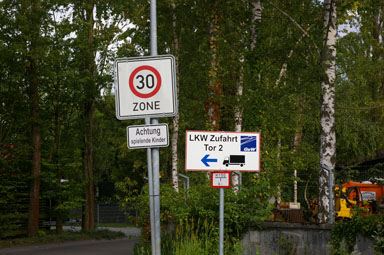
Children playing one way, trucks another.
Many of the houses have gardens, as you'll see in the gallery, but not everyone has a garden or a large garden. A big community garden offers lots of space, easily reached by walking, for people who want more.
How is this possible? I've written before about the need for critical mass, and this many businesses shouldn't, by that logic, be supported by this small number of residents. Business here doesn't come from the road. 2338 just barely crosses the threshold where "population of about 2,000 to 2,500 is required to support the most basic neighborhood-scale commercial services." While the grocery store didn't seem to impress Germans much, I'd be delighted to have that on the corner here.
I could tell stories about Europeans being more community-minded and staying closer to home for their shopping, or describe gasoline prices that are substantially higher because of taxes, or invoke history and the need for defense along a historically dangerous border. In the end, though, I think it really comes down to the hard edges Germans have kept on their villages, from custom and through zoning.
When you're between villages in this area, the main sign of civilization you can see is a church steeple against the sky. There aren't farmhouses, barns, or scattered houses. (I did see some sheds and greenhouses, as well as shelters for walking trails, and there were more isolated farmhouses in the Black Forest.)
The development pattern this produces is even clearer if you look at a map:

Concentrated village surrounded by uninhabited land (Click for Google Maps).
Meissenheim itself is very concentrated, with empty fields, forest, and water surrounding it. A few main roads - none particularly optimized for speed or volume - connect it with villages just off that map. None of those villages is that much larger than Meissenheim, and most have similar sets of services.
Under these conditions, smaller population numbers can support a larger number of businesses. I don't think, however, that this helps the argument for nodal development (or whatever the County would like to call it this year) in Tompkins County. Existing conditions don't look at all like this, and enforcing such behavior even on new development is simply not politically possible.
From Dryden's earliest settlement, isolated farmhouses have been common. A majority of residents live outside of the villages and hamlets. Even if gas prices climbed to German levels (or beyond), the amount of investment we've made in our existing infrastructure makes it unlikely that we'd suddenly shift into dense villages surrounded by genuinely uninhabited land.
If you'd like to get a better sense of this, I've posted a photo gallery of Meissenheim, photos of the southwestern corner of the village where we spent most of our time. As you'll see, it's not a medieval walled village (I'll post pictures of one of those later), but while it's modern and similar to Dryden in many ways, it feels extremely different from what we see here.
August 29, 2011
Hydrofracking politics, local and state
While they may have tried to present themselves as the middle ground in that strange Ithaca Journal article a month ago, the Dryden Safe Energy Coalition is stepping up its industry affiliations and its rhetoric:
about sixty leaders came together on August 22 at a Dryden Safe Energy Coalition (DSEC) sponsored, by invitation only, meeting in Binghamton to discuss legal strategies for pushing back against, and legally combating, local ordinances banning safe, regulated, energy development and taking landowner property unjustly without compensation. Key speaker at the conference was noted New York and Pennsylvania oil and gas attorney and geologist Michael P. Joy.
Conference participants attending included an array of leaders from local, regional, and statewide landowner coalitions throughout upstate New York as well as leaders of farm and industry groups such as the Farm Bureau, the Independent Oil and Gas Association of New York (IOGA), Chesapeake Energy Corporation, and Energy in Depth. DSEC moderator Henry S. Kramer said, "We are bringing together landowners, farmers, and industry in common cause to overturn bans and unpaid takings."
Meanwhile, there's been some interesting movement in the New York State Senate. I noted that State Senator Jim Seward had sponsored legislation clarifying that municipalities have the right to zone out drilling. At the time, I thought that was a surprising take for Seward, especially given his neighboring State Senator Tom Libous' generally strong support for drilling.
Now, Seward's position seems pretty moderate, at least in contrast with an even more surprising Senator. Greg Ball is generally on the right-most edge of the entire legislature, but he seems to have concluded that hydrofracking is a threat to the private property he so powerfully promotes.
He held an August 23rd hearing which the oil and gas representatives chose not to attend. Perhaps more constructively, Ball released a proposal today that I think more clearly defines what "responsible drilling" could and should be like if drilling is to happen:
Immediate 180 day comment period on hydrofracking.
Mandatory full disclosure of all chemicals used and compounds produced during the hydrofracking process. Requires oil and gas companies to inform New York State Division of Oil, Gas, and Geothermal Resources what chemicals are injected, the source of water used, how much water was used, and whether any radiological components were injected, and their fate.
Mandatory water and soil testing by an official governmental third-party for presence of chemicals used by the fracturing process prior to drilling
All fracking companies must agree to sign a Presumption of Causation Agreement with the State of New York.
Mandatory full reimbursement to property owners by negligent fracking companies for 150% of the real estate's market value of property, based on estimates prior to drilling, and 100% of the cost for full remediation of soil and water. The company will also be accountable for full reimbursement of the land owner's legal fees.
Mandatory full remediation of soil and water, and free medical monitoring for life. All settlements are not to be taxed.
Allow local governments to enact or enforce certain laws and ordinances relating to oil, gas and solution mining.
Mandatory adherence to an environmental impact assessment process, similar to New York's SEQR Process, to assess the impact to the environment from fracking.
Mandatory disclaimers and warning statements on lease documents about the risk of contamination of soil and water, as well as the potential health affects, related to fracking spills.
I will be very curious to see how (and if) the gas companies and their local allies respond to this plan. Somehow I suspect they won't be too enthusiastic about "responsible drilling" when it includes a heavier dose of responsibility. On the more optimistic side, you never know - they might agree with it as part of a broader possible compromise on drilling.
(I tend to find I either completely agree with Greg Ball or completely disagree with him. I'm not sure there's another politician with whom I have such clear lines.)
Update: Ball's proposal is apparently too much for the Dryden Safe Energy Coalition. Meanwhile, over at The Albany Project, one commenter suggests escrow accounts to ensure the remediation side of this holds up.
